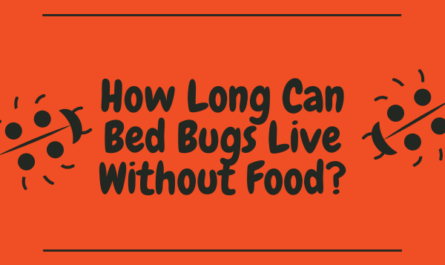Does Thermowood Need Treating?
Thermowood is a type of modified wood that has gained popularity in recent years due to its enhanced properties and sustainability. It is created by subjecting regular wood to high temperatures, which changes its chemical and physical composition. This process results in improved stability, reduced moisture absorption, and increased resistance to decay and insects. However, does Thermowood need additional treatment to maintain its properties and longevity? Let’s delve into this question and explore the considerations associated with treating Thermowood.
What is Thermowood?
Thermowood is produced through a heat treatment process that involves heating the wood to temperatures between 180-230 degrees Celsius in a controlled environment, typically using steam. This treatment alters the wood’s cell structure, resulting in reduced moisture content, improved dimensional stability, and increased resistance to decay and fungal growth. It essentially mimics the natural aging process of wood, making it more durable and suitable for various outdoor applications.
The Natural Properties of Thermowood
- Dimensional Stability: Thermowood is less prone to shrinkage, warping, and swelling compared to untreated wood. The heat treatment significantly reduces the wood’s moisture content, minimizing its susceptibility to environmental changes.
- Durability: The process of heat treatment alters the wood’s composition, making it less appetizing to insects and more resistant to decay and rot. This increases its longevity and reduces the need for regular maintenance.
- Improved Insulation: Thermowood has improved thermal properties due to the reduction in cell wall components. This makes it an excellent material for applications requiring good insulation, such as building facades.
Treating Thermowood: Is it Necessary?
The fundamental question is whether Thermowood needs additional treatment once it has undergone the heat treatment process. In general, the heat treatment provides Thermowood with exceptional durability and stability, reducing the necessity for further treatments. However, there are certain considerations to keep in mind:
- Surface Treatments: While the heat treatment improves the wood’s durability, some individuals may opt for surface treatments like stains, oils, or varnishes for aesthetic purposes. These treatments can enhance the wood’s appearance, provide UV protection, and offer an extra layer of water resistance.
- Maintenance: Although Thermowood is highly durable, regular maintenance is still essential to preserve its appearance and longevity. This can include cleaning, reapplication of surface treatments, and periodic inspections for any signs of damage or wear.
- Environmental Exposure: The need for additional treatment might vary based on the environmental conditions to which the Thermowood is exposed. In harsh climates or high-moisture areas, additional protective coatings or treatments might be considered to further enhance its resistance to the elements.
FAQs: Does Thermowood Need Treating?
1. What is Thermowood, and how is it made?
Thermowood is a modified wood produced through a heat treatment process, involving subjecting regular wood to high temperatures (180-230°C) in a controlled environment, typically using steam. This alters the wood’s cell structure, resulting in enhanced stability, reduced moisture content, and improved resistance to decay and insects.
2. Is Thermowood resistant to decay and insects without additional treatment?
Yes, the heat treatment process increases Thermowood’s natural resistance to decay and insect infestation. The altered composition of the wood deters insects and provides a level of decay resistance, making it a durable and long-lasting material.
3. Does Thermowood require any specific maintenance?
While Thermowood is highly durable, regular maintenance is advisable. This includes routine cleaning to remove dirt and debris, as well as reapplication of protective coatings if surface treatments were applied to maintain its appearance and properties.
4. Can I stain or paint Thermowood for aesthetic purposes?
Yes, you can stain, paint, or varnish Thermowood to achieve a desired aesthetic. However, it’s important to choose appropriate products that are compatible with Thermowood and follow the manufacturer’s instructions to ensure the best results.
5. Does exposure to harsh weather affect Thermowood’s properties?
Thermowood’s heat-treated properties make it highly resistant to environmental factors, including exposure to harsh weather conditions. However, in extreme conditions or prolonged exposure, additional protective coatings might be advisable to further enhance its longevity.
6. Is Thermowood suitable for outdoor applications?
Yes, Thermowood is an excellent choice for outdoor applications due to its enhanced stability and resistance to moisture. It is commonly used for decking, cladding, fencing, and other outdoor structures.
7. Can I use Thermowood in moist environments, such as bathrooms or saunas?
Yes, Thermowood’s reduced moisture absorption and enhanced stability make it suitable for use in moist environments like bathrooms and saunas. However, proper installation and periodic maintenance are essential to ensure its longevity.
8. Is Thermowood eco-friendly?
Yes, Thermowood is considered eco-friendly as it is derived from sustainably sourced wood. The heat treatment process uses only heat and steam, making it an environmentally friendly modification method compared to certain chemical treatments.
9. Is Thermowood more expensive than untreated wood?
Yes, Thermowood is generally more expensive than untreated wood due to the additional processing involved in the heat treatment. However, its enhanced durability and longevity often justify the cost difference.
10. Can Thermowood be recycled or repurposed?
Yes, Thermowood can be recycled or repurposed like regular wood. The thermally modified wood can be reused in various ways, contributing to sustainability efforts and reducing waste.
Conclusion: Does Thermowood Need Treating?
Thermowood, with its inherent durability and stability, is a remarkable material that generally does not require additional treatment. The heat treatment process significantly enhances its properties, making it an excellent choice for various applications. However, depending on aesthetic preferences, environmental exposure, and desired longevity, some individuals may choose to apply surface treatments. Ultimately, understanding the natural properties of Thermowood and considering specific use cases will guide the decision regarding whether additional treatment is necessary. Regular maintenance and care are essential to ensure the Thermowood maintains its beauty and functionality over time.
Visit the link to read more: https://family-fitness-fun.com/how-to-never-miss-your-daily-workout/





